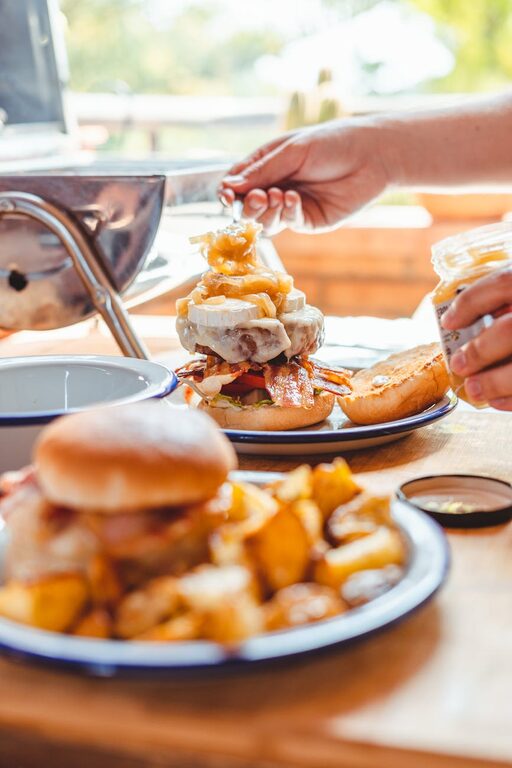Planning meals from pantry staples is an excellent way to save time, reduce food waste, and keep your kitchen organized. Whether you’re cooking for one or feeding a family, knowing how to use what you already have on hand can make mealtime less stressful and more enjoyable. In this post, we’ll explore how to plan meals using common pantry ingredients and share helpful tips to get you started.
Why Plan Meals from Pantry Staples?
Pantry staples are the non-perishable foods you keep on hand—think canned goods, dried grains, spices, and baking essentials. Planning meals around these items has several benefits:
– Convenience: You can whip up meals quickly without needing to run to the store.
– Cost-effective: Using what you already have reduces impulse buys and waste.
– Versatility: Many staples can be combined in various ways to create diverse dishes.
– Emergency-ready: Having meal ideas based on pantry items prepares you for busy days or unexpected events.
Step 1: Take Inventory of Your Pantry
Before you start planning, it’s important to know exactly what you’ve got. Set aside some time to:
– Clear your pantry shelves and check expiry dates.
– Group items by type (grains, canned goods, spices, etc.).
– Make a list or spreadsheet of ingredients available.
Knowing what you have makes it easier to visualize meal options and avoid duplicate purchases.
Step 2: Choose a Meal Framework
Decide which meals you want to plan for (breakfast, lunch, dinner, snacks) and how many servings you’ll need. Consider how many days you want covered—whether that’s a full week or just a few days.
Some common meal frameworks using pantry staples include:
– Grain bowls: Combine cooked grains (rice, quinoa, couscous) with canned beans, vegetables, and a sauce or dressing.
– Soups and stews: Use canned or dried legumes, canned tomatoes, broth cubes, and spices for a warming meal.
– Pasta dishes: Pair pasta with canned tuna or beans, olive oil, garlic, and herbs.
– Stir-fries: Combine rice or noodles with canned vegetables and sauce ingredients like soy or chili sauce.
– Baked goods: Use flour, sugar, baking powder, and canned fruits or nuts for quick breads or muffins.
Step 3: Match Pantry Staples with Fresh Ingredients (Optional)
While the focus is on pantry staples, fresh ingredients can help elevate meals when available. For example:
– Fresh garlic or onions enhance flavor.
– Fresh herbs add brightness.
– Vegetables and fruits complement pantry staples.
If you plan to shop for fresh produce, base your list on recipes relying heavily on your existing pantry.
Step 4: Find or Create Recipes Based on Your Staples
Having a recipe list makes the planning process much smoother. You can:
– Search for recipes using your main pantry ingredients.
– Bookmark or write down your favorite staple-based recipes.
– Experiment with ingredient swaps to customize meals.
Examples:
– Chickpea curry: Canned chickpeas, canned tomatoes, coconut milk, curry powder.
– Tuna pasta salad: Canned tuna, pasta, olive oil, vinegar, canned corn.
– Lentil soup: Dried lentils, broth cubes, canned carrots, spices.
Step 5: Plan a Weekly Menu
Use your inventory and recipe list to plan a weekly menu showing each meal. This helps reduce last-minute decisions and shopping trips.
– Write down meals for each day.
– Note any prep work (e.g., soaking beans, chopping onions).
– Schedule leftover days to minimize waste.
Step 6: Organize Your Pantry for Easy Access
An organized pantry makes meal planning and cooking easier. Try:
– Using clear containers for items like flour, sugar, or rice.
– Labeling shelves or containers.
– Keeping frequently used items within easy reach.
– Storing similar items together.
Tips for Successful Pantry Meal Planning
– Rotate your pantry: Use older items first to avoid expiration.
– Stock basics: Keep staples like rice, pasta, canned beans, tomatoes, spices, oils, and broth on hand.
– Diversify your staples: Include multiple types of grains, legumes, and flavorings.
– Prep in bulk: Cook large batches of beans or grains for quick meal assembly.
– Keep it simple: Don’t feel pressured to create complex dishes; simple recipes can be just as satisfying.
Sample Pantry Staple Meal Plan for 3 Days
| Day | Meal | Main Pantry Ingredients |
|———–|—————-|—————————————–|
| Day 1 | Lentil Soup | Dried lentils, canned tomatoes, broth, spices |
| Day 2 | Tuna Pasta | Pasta, canned tuna, olive oil, canned corn |
| Day 3 | Chickpea Curry | Canned chickpeas, canned tomatoes, coconut milk, curry powder |
Conclusion
Meal planning from pantry staples is a practical skill that can make your kitchen routine more efficient and enjoyable. By taking stock of what you have, choosing versatile recipes, and organizing your pantry well, you’ll always have meal options at your fingertips. Over time, you’ll save money, reduce waste, and create delicious meals with ease.
Start with a simple inventory today and see how pantry meal planning can work for you!

